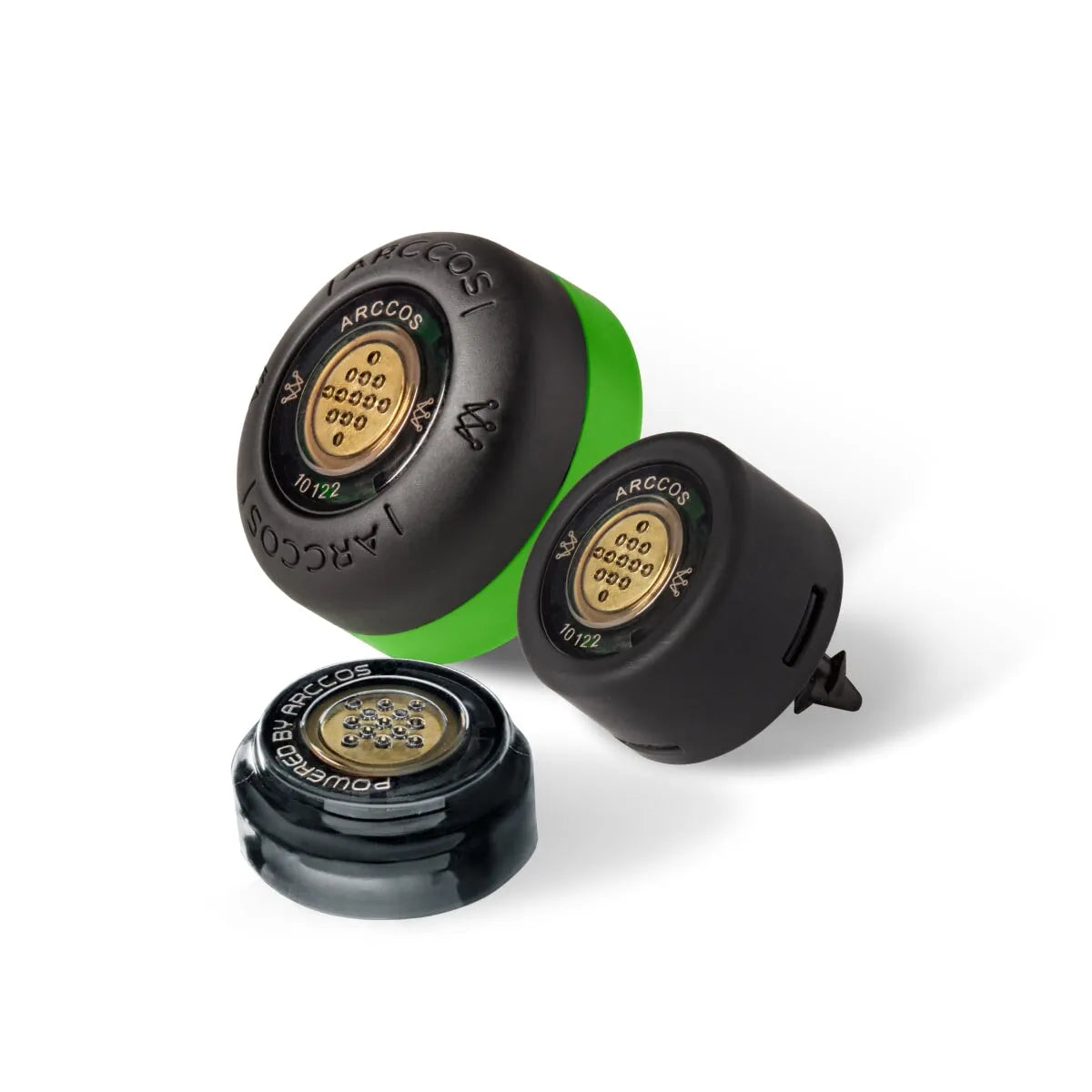
We closed our Fall Company Meeting with a guest who understands golf in ways few others do. Edoardo Molinari sat down with Arccos CEO Sal Syed for a fireside chat, and what followed was a wide ranging conversation about the role of data in the modern game, the culture of the Ryder Cup, and how small edges decide outcomes.
Molinari’s introduction to golf came at age eight in Turin, where his parents were members at a local club. Even while studying engineering, he kept playing, and in 2005 a single bunker shot at Merion put him into a playoff at the U.S. Amateur. He went on to win, a result that turned golf into a career rather than a pastime. That engineering background, however, never left him. Even as he pursued golf full time, he continued to think about the game like an analyst, always looking for patterns hidden in the noise.
Long before strokes gained became part of golf’s vocabulary, Molinari was already building his own system. At first, it was simple: fairway hit, green in regulation, number of putts. But curiosity pushed him further. Where did the misses go? Left or right? Long or short? The spreadsheet grew until it became more than a personal log. It was a way of making sense of performance. That curiosity ultimately led him to Mark Broadie in 2011, where he became the first Tour professional to see the strokes gained database. “It was like finding gold,” he recalled.
From that point forward, data became inseparable from his career. During the COVID shutdown, when golf paused, a few European players approached him for help. They were frustrated with the shallow reports available and asked him to dig deeper. What started as a side project quickly evolved into something larger. Within two years he was advising more than 30 professionals, even while competing against them. The lesson was clear: players at any level struggle to see their own tendencies. Memory is unreliable. “We remember the three putts we missed yesterday,” Molinari said, “not the twenty we holed last week.” One client was convinced he missed everything to the right, only to discover through the numbers that he missed five times more often left.
Examples like this reveal why data does not replace feel. It sharpens it. When Matt Fitzpatrick, one of Molinari’s first players, considered switching putters after a decade, he trusted the feel of the new model but waited for confirmation. Two tournament weeks showed it was gaining him half a stroke per round. That was enough. “He liked the feel,” Molinari explained, “but the numbers made the decision.”
This balance of feel and fact carries into equipment testing as well. Range sessions can suggest one story, but the course always tells the truth. Molinari recalled five players in the Middle East all testing the same new driver. On paper it looked promising. On the course they were shorter, less accurate, and missing more fairways. Within a month, each had gone back to their old models. One soon won and sent him a thank you.
The conversation then shifted to juniors and how differently they grow up now. Molinari never touched a launch monitor as a child. His nine year old daughter already has. At his academy, the first step with any junior is not to ask how they have been playing, but to open their Arccos dashboard. “Stories about bad bounces do not matter,” he said. “The data tells you what actually happened.”
When the discussion turned to the Ryder Cup, Molinari was just as candid. Tiny tendencies such as an opponent who struggles with left to right putts, or a pairing compromised by using different ball models, can tilt a match. Course setup offers another lever: green speed, rough height, fairway width. Yet, in his mind, Europe’s greatest strength is not the conditions but the culture. “For us, the Ryder Cup is the goal for the next two years,” he said. That continuity, and the weight of history passed down from captains and legends, is what he believes continues to separate Europe.
Before wrapping up, he offered something lighter but no less practical. Advice for anyone playing in a scramble. Let the most reliable driver tee off first. Do not put the erratic player in that spot. And if two players face the same putt, send the best putter first. Making one reduces pressure, missing sets up the adjustment.
It was a fitting way to end the session. The same principles that guide a Ryder Cup team, sequencing strengths, trusting the evidence, finding small edges, apply just as well to a Saturday scramble. For Molinari, clarity is the constant. See what is really happening, strip away assumptions, and make the smart play.






Share:
Arccos Unveils Golf’s First AI-Powered Smart Laser Rangefinder
Trying to Break 90 at Bethpage Black